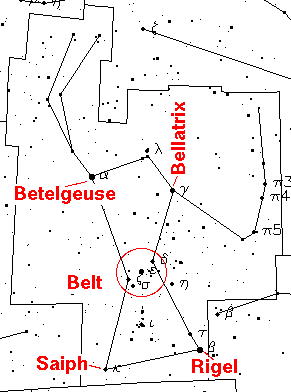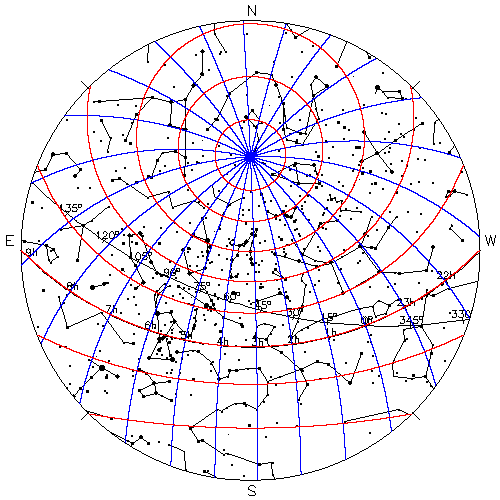

The combination of diurnal circles and hour circles allows us to make a grid for the celestial sphere. This celestial grid is analogous to latitude and longitude on Earth. Hour circles, running from pole-to-pole, are analogous to lines of constant longitude. Diurnal circles, running parallel to the equator, are analogous to lines of constant latitude. Just as we can locate cities on the globe by longitude and latitude, we can locate stars by assigning numbers to the celestial grid.
The (red) diurnal circles are parallel to the celestial
equator; we can locate their position by their angle from
the celestial equator. The result is called
declination (dec or the Greek letter delta:
 for short).
This is exactly analogous to how we
assign latitude.
for short).
This is exactly analogous to how we
assign latitude.
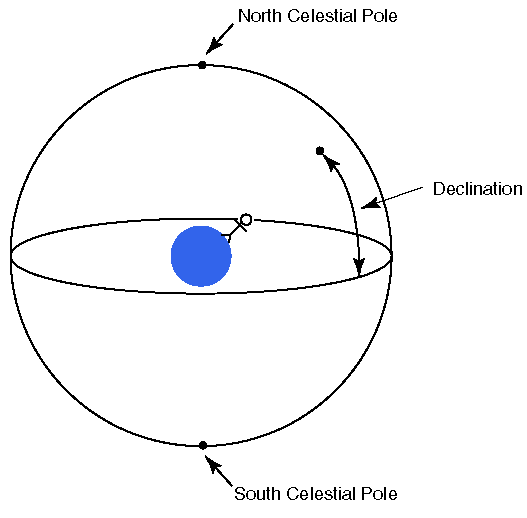
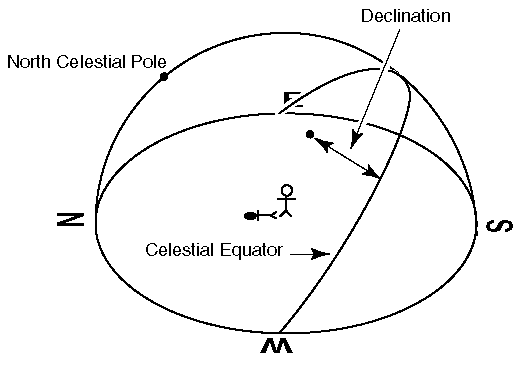
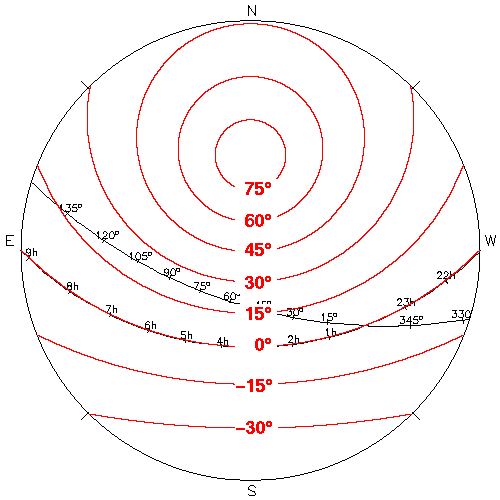
Declination, like latitude, has a natural zero: the equator.
However, there is no natural zero for longitude. Historically
different nations chose different zeros for longitude for their maps;
for example, England used the location of Greenwich England as the zero
for longitude and France used Paris. The same problem applies to the
celestial equivalent of longitude, right ascension. Astronomers
have chosen the vernal equinox as the zero point for right ascension
(RA or the Greek letter alpha:  for
short). In addition astronomers use an unusual way of measuring the
angle for RA: it is measured in "hours" where 1h=15°.
Thus there are 24h of RA around the celestial equator. The
reason for this oddity is that the celestial sphere makes one full
rotation (24h of RA) in one day (24 hours of time). Thus
the celestial sphere advances about 1h of RA in an hour of
time.
for
short). In addition astronomers use an unusual way of measuring the
angle for RA: it is measured in "hours" where 1h=15°.
Thus there are 24h of RA around the celestial equator. The
reason for this oddity is that the celestial sphere makes one full
rotation (24h of RA) in one day (24 hours of time). Thus
the celestial sphere advances about 1h of RA in an hour of
time.
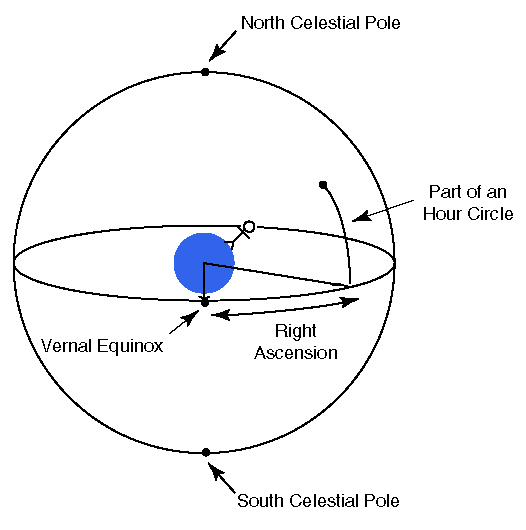
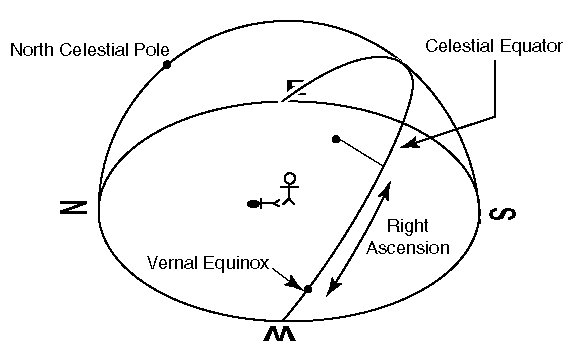
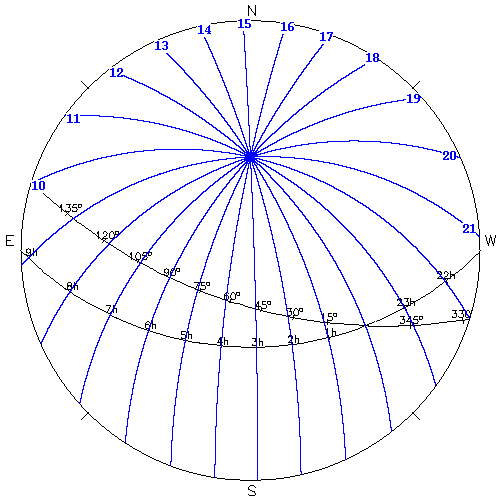
Fractions of an hour of RA are appropriately recorded as minutes and seconds. For example Betelgeuse has an RA of 5h55m10.3s, just a bit short of 6h. One degree of declination is also broken down by fractions of 1/60 into what are called arc-minutes (denoted: ' ) and arc-seconds (denoted: " ). The declination of Betelgeuse is 7° 24' 25".

You should be able to confirm the coordinates of Betelgeuse. In addition confirm that the RA for the pointers of the Big Dipper is about 11h with declinations near 60°. The Great Square of Pegasus is between RA 23h and 0h and declination 15° to 30°. The "W" of Cassiopeia has a declination of about 60° and a RA between 0h and 2h. Deneb, at the head of the "Northern Cross", has a declination of about 45° and an RA of about 20h40m. The stars in the belt of Orion are nearly on the celestial equator and hence have a declination near 0°. Rigel is south ("below") the celestial equator and hence has a negative declination.
